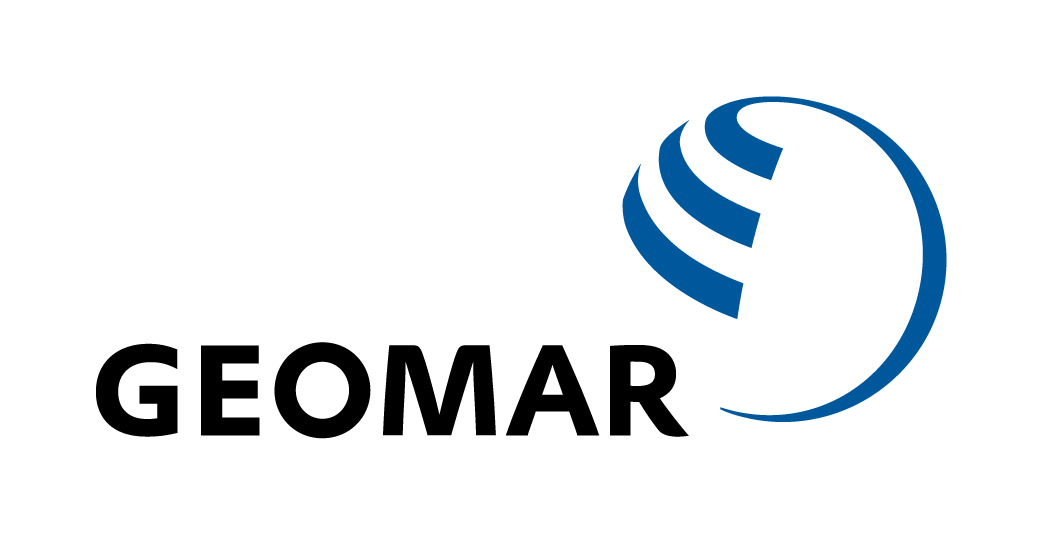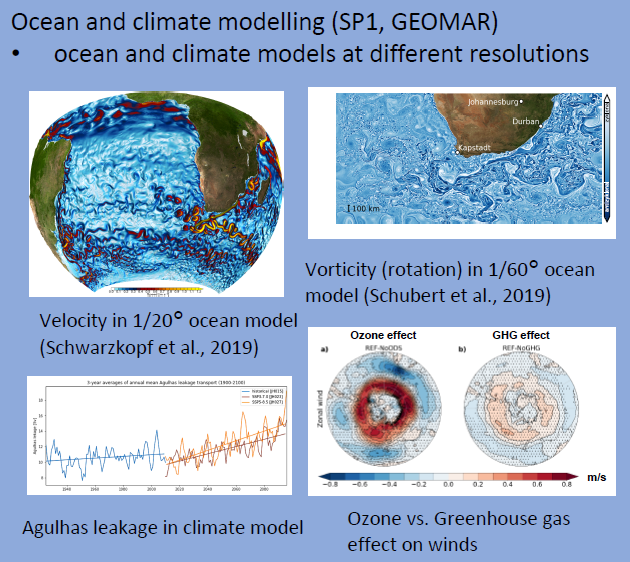SP1
Ocean and climate modelling


The Agulhas leakage represents the transport of warm and saline Indian Ocean waters around the southern tip of Africa and into the Atlantic Ocean. These waters enter the upper limb of the Atlantic Meridional Overturning Circulation (AMOC) and, over time, they are transported into the North Atlantic. Variations in the Agulhas leakage on time scales of several years and longer impact the AMOC. Driven by the intensification of the Southern Hemisphere westerly winds, the Agulhas leakage increased during the second half of the twentieth century, feeding more warm and saline tropical Indian Ocean waters into the AMOC.
In work package 1.1 we investigate the evolution of the Agulhas Current system and coastal dynamics as well as changes in Agulhas Leakage over the past decades. To adequately simulate mesoscale processes contributing to the Agulhas leakage we develop and use global ocean general circulation model simulations that allow for the representation of eddies in the South Atlantic and western Indian oceans. The facilitated model configurations are part of the INALT-family.
In work package 1.2 we perform model simulations to find out how the Agulhas leakage will evolve under the changing climate of the twenty-first century. We employ a new ocean-atmosphere coupled climate model, FOCI , with enhanced ocean resolution around South Africa and with interactively calculated atmospheric ozone chemistry. Sensitivity simulations with FOCI allow us to differentiate between the different drivers of change in the westerly winds, and therefore of Agulhas leakage multi-annual variability.
During the last decades of the twentieth century, the formation of the Antarctic Ozone hole has led to an intensification of the Southern Hemisphere westerly winds. Concomitantly, increasing concentrations of greenhouse gases (GHG) have further strengthened the westerlies. The enhanced wind stress acting on the ocean`s surface led to changes in the ocean circulation and to an increase in Agulhas leakage.
GHG concentrations continue to increase in the twenty-first century, but the ozone hole is expected to recover as ozone depleting substances are being phased out following the Montreal Protocol. The recovery of ozone will weaken the westerlies, opposing the effect of the increasing GHG, which will act to strengthen the westerlies. The direction of the combined effect will depend on the extent to which humans will manage to reduce the emission of GHG. Under a strong-emission scenario, the impact of the GHG will outweigh that of ozone depletion and the westerlies will continue to intensify. Will this intensification be strong enough to increase the Agulhas leakage?